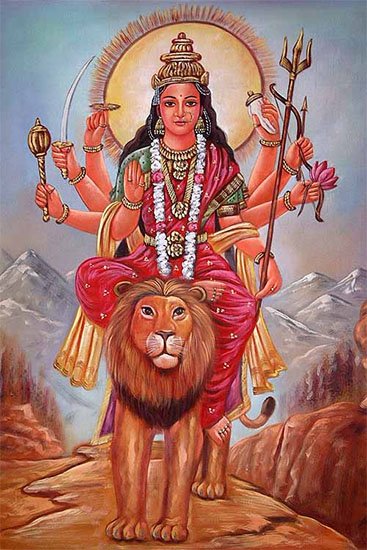Rupastha, Rūpastha, Rūpasthā: 9 definitions
Introduction:
Rupastha means something in Hinduism, Sanskrit, Jainism, Prakrit. If you want to know the exact meaning, history, etymology or English translation of this term then check out the descriptions on this page. Add your comment or reference to a book if you want to contribute to this summary article.
In Hinduism
Shaktism (Shakta philosophy)
Source: Google Books: ManthanabhairavatantramRūpasthā (रूपस्था) refers to “being established in form”, according to the Ṣaṭsāhasrasaṃhitā, an expansion of the Kubjikāmatatantra: the earliest popular and most authoritative Tantra of the Kubjikā cult.—Accordingly, “O dear one, Piṇḍakubjī who has arisen in the first Wheel is established in the Body, she is called Samayā and she bestows the fruit of the Yoga of the Body. Siddhakubjī is in the second (Wheel) in the middle of the Sequence of the Parts. Vajrakubjī is in the third (Wheel). She is the Great Mother who is Established in Form (rūpasthā). [...]”.

Shakta (शाक्त, śākta) or Shaktism (śāktism) represents a tradition of Hinduism where the Goddess (Devi) is revered and worshipped. Shakta literature includes a range of scriptures, including various Agamas and Tantras, although its roots may be traced back to the Vedas.
In Jainism
General definition (in Jainism)
Source: Google Books: Yoga in JainismRūpastha (रूपस्थ).—One of the five types of meditation (dhyāna);—The rūpastha-dhyāna consists in meditating on the divine qualities and extraordinary powers of the arahants. The Yogī by virtue of meditating on the divine qualities imagines his own self as the transcendental self and believes that “I am that omniscient soul and not anything else”.
Source: archive.org: TrisastisalakapurusacaritraRūpastha (रूपस्थ) refers to “meditation on the form of the Tīrthaṅkaras” and represents one of the four types of Dhyāna or “meditation”, according to chapter 1.6 [ādīśvara-caritra] of Hemacandra’s 11th century Triṣaṣṭiśalākāpuruṣacaritra: an ancient Sanskrit epic poem narrating the history and legends of sixty-three illustrious persons in Jainism.—(cf. Uttarādhyayana 36.76 and Jñāta. 15. P. 34)
Accordingly, as Bharata praised the statue of Lord Ṛṣabha: “[...] Homage to you, giving pleasure even to hell-inhabitants by the five kalyāṇas, maker of happiness to the world, Lord of Three Worlds. [...] Whoever direct meditation, concentrated on your form (i.e., rūpastha), toward you, to those great souls you are present in person, O Lord. Even though you are free from affection, do not abandon my mind, as you have abandoned all saṃsāra, O Supreme Lord”.
Rūpastha (रूपस्थ).—One of the four types of saṃsthānavicaya (contemplation of objects of structure of the universe).—What is meant by ‘contemplation on a form’ (rūpastha)? The practiser of this type of meditation thinks that he is attending the religious congregation (samośaraṇa) of the fordmaker who is sitting on a golden throne on the top of the lotus surrounded by the eight auspicious elements (prātihāryas) or he is himself sitting on the thrown as ford maker. Another type of this meditation is to contemplate on the idol / image of a fordmaker and enshrine that in his brain to contemplate on his virtues.
Source: Prakrit Bharati Academy: Death with EquanimityRūpastha (रूपस्थ) or Rūpasthariṣṭa refers to “bodily death-signs”, according to the Riṣṭasamuccaya by Durgadevācārya (Ācārya Durgadeva): a Jain work from the 11th century devoted to the study of death signs.—The Riṣṭasamuccaya mentions three types of death-signs (riṣṭa), [e.g.]: Rūpastha Riṣṭa or visual or virtual death–signs such as visions, dreams, seeing the shadow–man etc, which can predict death a couple of days to a couple of years in advance.

Jainism is an Indian religion of Dharma whose doctrine revolves around harmlessness (ahimsa) towards every living being. The two major branches (Digambara and Svetambara) of Jainism stimulate self-control (or, shramana, ‘self-reliance’) and spiritual development through a path of peace for the soul to progess to the ultimate goal.
Languages of India and abroad
Sanskrit dictionary
Source: Cologne Digital Sanskrit Dictionaries: Monier-Williams Sanskrit-English DictionaryRūpastha (रूपस्थ):—[=rūpa-stha] [from rūpa > rūp] mfn. possessed of form or shape, [Rāmatāpanīya-upaniṣad]
[Sanskrit to German]
Sanskrit, also spelled संस्कृतम् (saṃskṛtam), is an ancient language of India commonly seen as the grandmother of the Indo-European language family (even English!). Closely allied with Prakrit and Pali, Sanskrit is more exhaustive in both grammar and terms and has the most extensive collection of literature in the world, greatly surpassing its sister-languages Greek and Latin.
Kannada-English dictionary
Source: Alar: Kannada-English corpusRūpastha (ರೂಪಸ್ಥ):—[noun] = ರೂಪವಂತ [rupavamta].
Kannada is a Dravidian language (as opposed to the Indo-European language family) mainly spoken in the southwestern region of India.
See also (Relevant definitions)
Starts with: Rupastavam.
Full-text: Dhyana, Rishta, Durgadeva, Durgadevacarya, Padastha, Pindastha, Samsthanavicaya, Rupavarjita, Rishtasamuccaya, Vajrakubji.
Relevant text
Search found 4 books and stories containing Rupastha, Rūpastha, Rūpasthā, Rupa-stha, Rūpa-stha, Rūpa-sthā; (plurals include: Rupasthas, Rūpasthas, Rūpasthās, sthas, sthās). You can also click to the full overview containing English textual excerpts. Below are direct links for the most relevant articles:
Jain Science and Spirituality (by Medhavi Jain)
3.5. Classes of Meditation < [Chapter 6 - Spirituality in Jainism]
Trishashti Shalaka Purusha Caritra (by Helen M. Johnson)
Part 20: Bharata’s pūjā and stutis to the Arhats < [Chapter VI]
Jainism and Patanjali Yoga (Comparative Study) (by Deepak bagadia)
Dharmadhyana (virtuous or righteous meditation) < [Chapter 3 - Jain Philosophy and Practice]
The Buddhist Path to Enlightenment (study) (by Dr Kala Acharya)
Two types of Tapas (Austerities) < [Chapter 4 - Comparative Study of Liberation in Jainism and Buddhism]